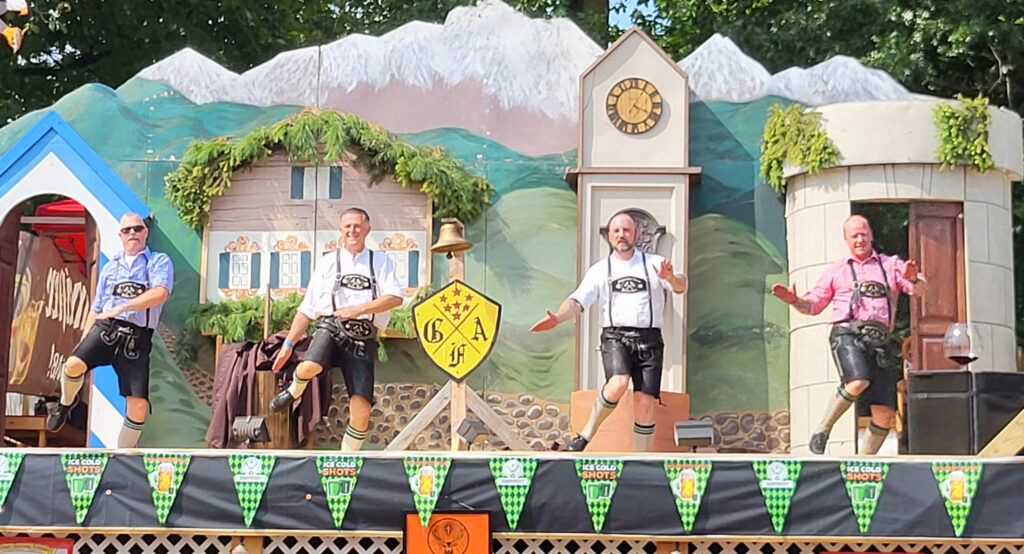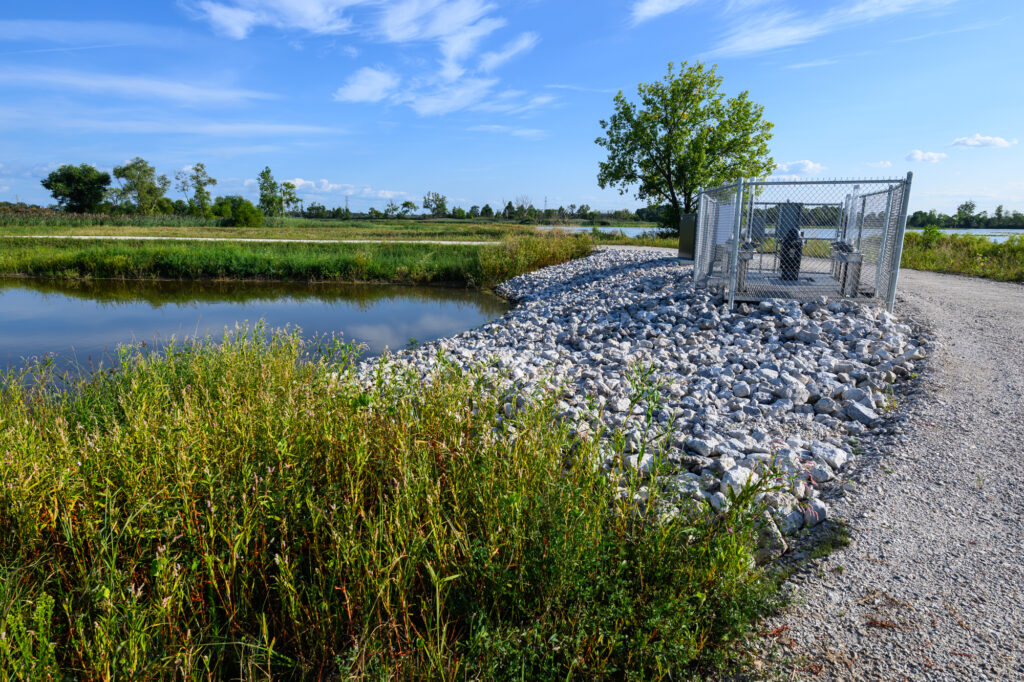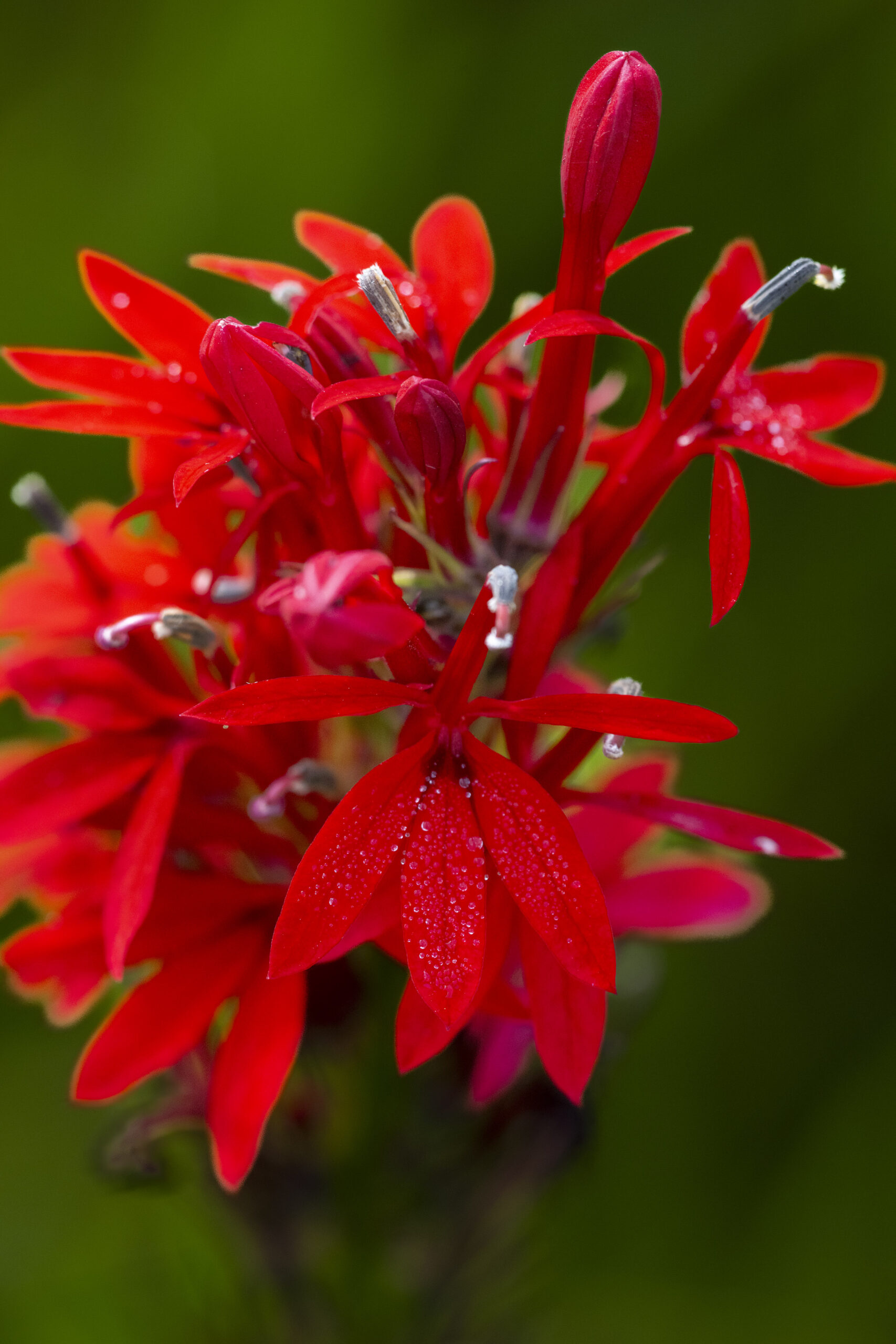AW Trail prairie mowed down


Anthony Wayne Trail prairie mow angers residents

Northwest Ohioans are so lucky to experience the diverse wildlife found within the Great Lakes Basin, with ecosystems that include the Lake Erie Coastal Zone, the Oak Openings Region, the Great Black Swamp and the Maumee River.
TOLEDO – I have always had a deep love and respect for the outside world. Growing up, I remember going to Maumee Bay, Magee Marsh and Crane Creek with my family to walk the trails, watch for migratory birds and walk along the Lake Erie shoreline.
Now, as an adult, I keep a garden, continue to enjoy our city’s many wonderful metroparks, such as Wildwood, Side Cut and Oak Openings. I also pick up litter wherever I go. Our small but diverse ecosystem is vitally important because we host a plethora of pollinator and migratory bird species.
Annually, 70,000 to 80,000 people visit Magee Marsh in the six-week period mid-April through May during the songbird migration.
-metroparkstoledo.com
In order for these birds to make such a long and treacherous migration, many native plant species and pollinators are needed to support the vast number of birds. Our area is home to many different species of bees and butterflies, including the rare Karner blue butterfly, which is endangered due to habitat loss.
Like the Karner blue butterfly, honeybee populations are also declining around the world due to use of pesticides and colony collapse disorder. Farmers and gardeners alike rely on honeybees in order to pollinate crops. If honeybees were to become extinct, our crops could not be pollinated enough to support us.
A little over a decade ago, the Toledo Zoo showed its dedication to conservation efforts through the establishment of the Wild Toledo program.
In the fall of 2014, Wild Toledo began converting previously mowed lawn and abandoned lots to environmentally beneficial urban prairies, which save resources through reduction of mowing, improve rain water management and reduces runoff. These plantings also provide aesthetically pleasing habitat for important native species like birds and pollinators.
-toledozoo.org
The benefits of planting these prairies include increasing pollinator population, decreasing carbon dioxide, reducing runoff, creating resting spots for migratory birds, reducing upkeep, creating sources of beauty, increasing food sources and increasing habitats in general.


The Anthony Wayne Trail has been a dedicated prairie since the Wild Toledo program began, but it has since been mowed down by the City of Toledo, which has upset many citizens.
A video from the Toledo Zoo was uploaded to their Facebook page on August 23 as a response to concerns over the missing prairie. Dr. Ryan Walsh, director of Plant Conservation, stated that “the Anthony Wayne Trail prairie is one of the first prairie Wild Toledo put in over a decade ago and it was, by all accounts, one of our most successful at this point. That prairie was pretty much self-sufficient,” he said. “It required very little maintenance on our part because, once a prairie’s reached a certain size, they will actually outcompete all the weeds, and there’s very little maintenance that needs to be done.”
Walsh added that the prairie was a collaboration with the city, as it is their land being used. “Unfortunately, the City of Toledo decided they did not like look of the prairies. They did not like the fact that it was providing ecosystem services and they wanted to take this in a different direction.”


According to news reported by 13abc, the city had been getting complaints about the appearance of the prairie. Some citizens believed the prairie to be weeds and wished to see grass rather than the diverse prairie. The news station also stated that the city wished to work with the zoo in order to establish a project where seasonal wildlife would be planted, but the zoo did not wish to respond.
Walsh went on to explain that the city didn’t have to spend money mowing the prairie. That’s actually saving tax payer dollars in the interest of conservation and creating habitat, in comparison to formal landscaping, which would be 30 to 40 times more expensive as a prairie instillation or mowing alone.
“So, there’s less time, effort, money and CO2 going into the atmosphere,” said Walsh.
It is extremely disheartening to me to see how the city has handled this situation. The zoo has been working hard to raise awareness about the importance of these prairies. The response from citizens has been plentiful, as people are upset over the actions of the city for their environmental negligence.
I, and many others, would like to see the city leave the prairies alone and let the zoo keep up their conservation efforts. It is important to keep these designated wildlife habitats so that we may live in a cleaner and healthier environment. This is not only vital for us right now, but for our future generations.
If you would like to start your own native wildlife garden or habitat, there are seeds and plants for purchase on the Toledo Zoo website.
We may do better in Toledo, but I hope our native pollinators can too.


Toledo feels the Pride


15 years of Pride celebrated in the streets of Downtown Toledo
TOLEDO – The city came alive over the weekend as the annual Toledo Pride Festival kicked off on Friday at Promenade Park. This year’s celebration offered a vibrant and diverse array of activities designed to honor love, diversity and community.
Friday’s festivities opened with a dynamic lineup of live music, DJs and drag performances. Performers, such as Ann Arbor Drag Queen Jessi Hex and Toledo’s very own Sam Tolson provided an evening of entertainment that kept attendees dancing well into the night. Once the sun went down, Fleet Feet held their Toledo Night Pride 5k Glo and 1-mile Fun Run.




The festivities continued on Saturday, with the Pride Parade, which started on Adams St. and concluded on Summit St. Hundreds of supporters, covered in their rainbow gear, lined the streets to cheer on the colorful procession.
Following the parade, Promenade Park became the epicenter of celebration once again for a second night of festivities. The day’s events featured even more live music, entertainment, and an expanded array of food trucks and community vendors.
“This year marks 15 years of pride here in Toledo,” said Pride Fest’s MC, DJ Savanna.
“Celebrating 15 years of Toledo Pride and my 5th year of participation, the parade remains my favorite. Seeing local businesses and people come together in joyful celebration highlights the strength and unity of our community, making each year a powerful reflection of who we are,” said Taylor Shettlewood.
With something for everyone, from captivating performances to local shopping opportunities, the weekend was filled with joy and unity. Toledo Pride remained a family-friendly event, welcoming people of all ages to join in and experience the city’s biggest pride celebration of the year.






Oregon Embraces Germany


Thousands gather for the 58th German-American Festival
Oregon – Thousands of people crowded together to celebrate the heritage and culture of Germany at the 58th annual German-American Festival at Oak Shade Grove from Friday through Sunday.
Germany’s sights, smells and sounds filled the festival grounds over the weekend. Attendees had the chance to watch live dance and musical performances, sample authentic German food and drink over 150 different types of beer. Visitors could also purchase souvenirs, such as t-shirts or authentic beer steins.
Every hour, attendees witnessed a live performance of the Glockenspiel, where dancers dressed in costume would act out a skit and transition to a dance routine. The show would end with the performers enjoying a drink and throwing items at the crowd. This live show is an homage to the Glockenspiel at the Marienplatz in Munich, Germany.
Wendy Mueller, vice chair of the VIP area, explained that the festival started at the Toledo Raceway park in the 1960s, and moved to its current location at Oak Shade Grove in the ’80s.


Ohio’s population is over 20 percent ethnic German, according to the United States Census Bureau. Mueller gave her thoughts on why it is important to have this festival, and to provide people with a place to express their German heritage.
“You don’t want to lose the culture, and this is a way, once a year, to celebrate the culture and have a great weekend at the end of the summer and start the holiday season,” she said.
The festival draws people from a multitude of backgrounds. It also brings in a combination of first-time attendees and people who have attended for several years.
One long-time attendee is Karen Foster, who has been to the festival for 30 years. She used to work at the festival when she belonged to the GBU foundation with her parents. Since her mother was from Frankfurt, she has strong ties to Germany. She shared what she would say to someone who has never attended the German-American Festival.
I would tell them they’d have to just come out and enjoy the dancing, the food, everything. Come on out and enjoy it, it’s a good time.
Karen Foster


Mike Willinger, chairman of the VIP area, shared that all the food enjoyed at the festival is homemade. The world-famous potato pancakes and salad are made from the 2,500 pounds of potatoes peeled and sliced the night before the festival. He also discussed his favorite part of the festival.
“The fact that we can get between two and three thousand people to come out here and help us get design, the camaraderie, the friendship, all the people that work so very, very hard to accomplish all this,” Willinger said.
He concluded by saying that “it just really pleases me that we can share that culture with people, and they are coming to enjoy it. So we’ll continue to do it as long as they keep coming.”
Unique Wetland Restoration


Little Portage Wildlife Area provides cleaner water
Port Clinton – A quiet, hidden gem of a wild wetland about 45 minutes east of Toledo is thriving thanks to the recent completion of a restoration project.
The Ohio Department of Natural Resources (ODNR) took about four years to transform the Little Portage Wildlife Area in Ottawa County into 357 acres of quality habitat that serves to improve water quality.


As part of Gov. Mike DeWine’s H2Ohio initiative, the restoration project involved redirecting water from over 400 acres of farmland into the wetland before entering the Little Portage River. This project was distinctive because ODNR worked with two local farmers, Todd Winke and Dick Lano, to fund the new tile system diverting the water. This will help filter out excess nutrients contributing to harmful algae blooms, such as phosphorus, before reaching the rivers that drain to Lake Erie.
The most unique aspect of the project is that this is Ohio’s first depetitioned ditch. This means that a ditch was removed from the petition process so that it could remain a natural habitat and won’t be disturbed by maintenance every few years, a better solution for wildlife.
Sarah Schott, wildlife communication specialist for the Ohio Division of Wildlife, said “those landowners were crucial partners for us in that they allowed us to do work on their property and redirect the water through pump systems.”


The bulk of the project was funded with a $3,086,673 H2Ohio grant, with the National Oceanic and Atmospheric Administration (NOAA), Ducks Unlimited and federal Pittman-Robertson funding making up the rest.
Water quality is just one aspect of the project. The project also greatly enhances the habitat for various species, such as ducks and other waterfowl, birds, reptiles and amphibians.
However, invasive species are a challenge and large amounts of both phragmites and purple loosestrife are visible throughout the property.
“It’s a constant battle all across the state with all sorts of different invasive plants that our wildlife management team is constantly battling,” Schott said.
She explained that the ODNR wildlife team will have to continue to manage the project in a way that balances their resources with benefiting wildlife as best as they can. The Division of Wildlife will also be able to use the new pump system to manipulate water levels for vegetation control, in addition to more traditional aerial treatments.


Another significant change is that the ODNR decided to remove the boat ramp and gate the main road leading back to the prior ramp area to better protect people and wildlife. Schott shared that their staff never wants to restrict access, but it was necessary in this case.
“There was just so much illegal activity going on that our officers and wildlife management people just couldn’t keep up with that,” she said. “So, this is a solution to hopefully curb some of that.”
She explained that people are still welcome to walk, fish, hunt and explore, and kayaking is also allowed, though she recommends that kayakers use a cart to walk the road and get further into the area.
The Little Portage Project is among over 100 completed H2Ohio water quality projects. Approximately 80 additional projects are underway, and Schott shared how busy her team is.
“Every single person in our wildlife staff in northwest Ohio is working on or is a part of an H2Ohio project in some capacity,” she added.


Visitors interested in exploring the new restoration can park in one of two gravel lots on each side of the wildlife area and walk the updated roads which lead to views of the Little Portage River on the west and the Portage River on the north.
Guests will experience a diverse ecosystem with trees, river marsh and dense flora.
Bloom of a cardinal-flower


Cardinal-flower for sale at upcoming plant sale at Blue Creek Metropark
BERKEY – The cardinal-flower isn’t a common wildflower, but, where it blooms it’s impossible to miss. Its time is now, from late summer into early fall. The spikes of deep red flowers stand on stalks up to four feet tall, typically in wet woods, along streams and other places where it can keep its feet wet.
It’s an ideal plant for attracting hummingbirds, which enjoy a mutually beneficial relationship with this deep-tubed wildflower. Ruby-throated hummingbirds are attracted to the red flowers and enjoy a fine nectar meal. In doing so the forehead of the hummingbird brushes against the male part of the flower, depositing pollen on the bird’s head. The hummingbird pollinates the plant when it visits other cardinal-flowers.
This attractive member of the bellflower family is an ideal plant to incorporate in rain gardens. Look for it at the upcoming wildflower plant sale at Blue Creek Metropark in Whitehouse, Ohio on Sept. 14-15. It’s an ideal opportunity get acquainted with other wildflowers for your home garden, as well.










